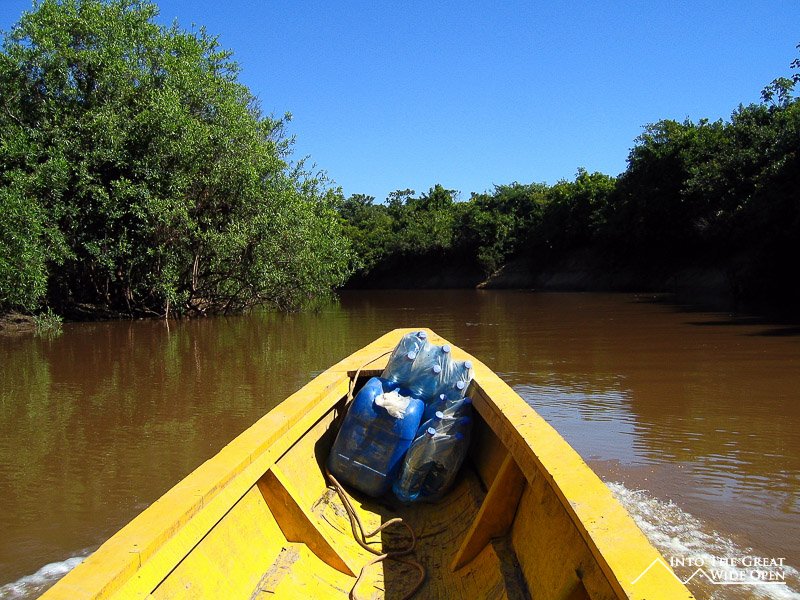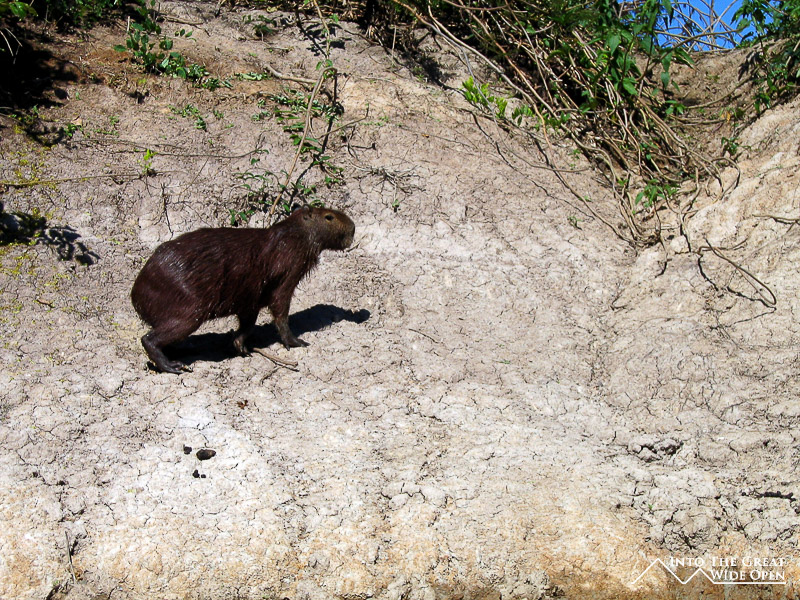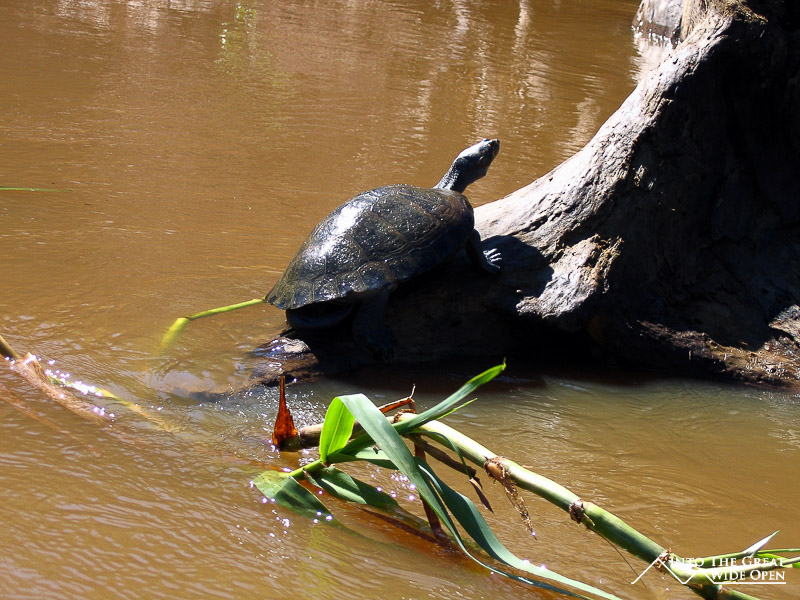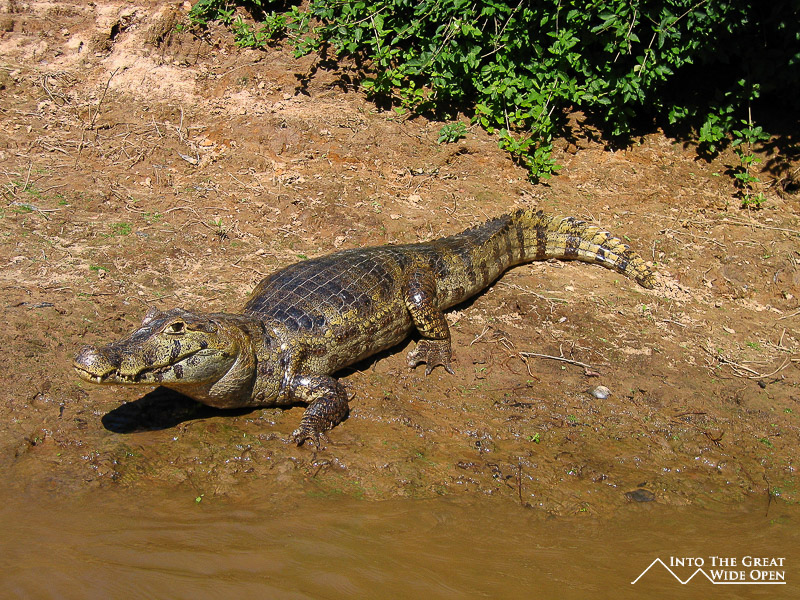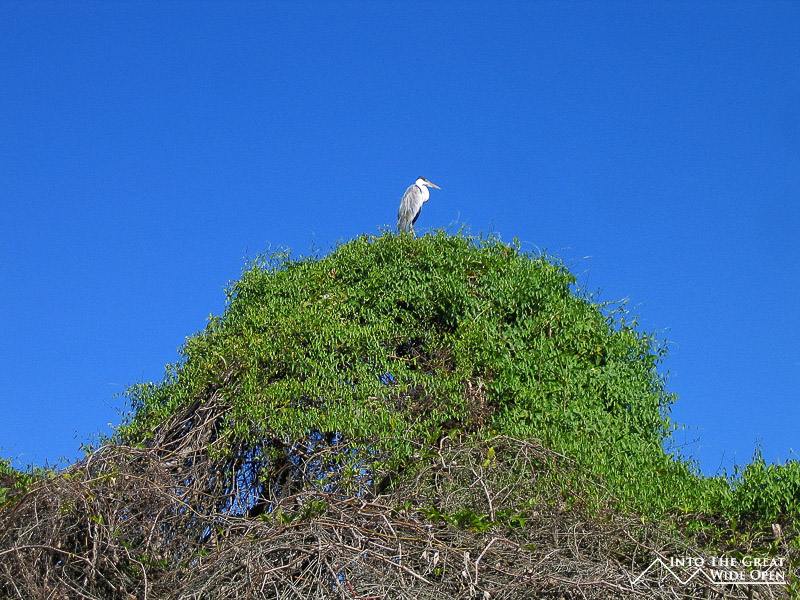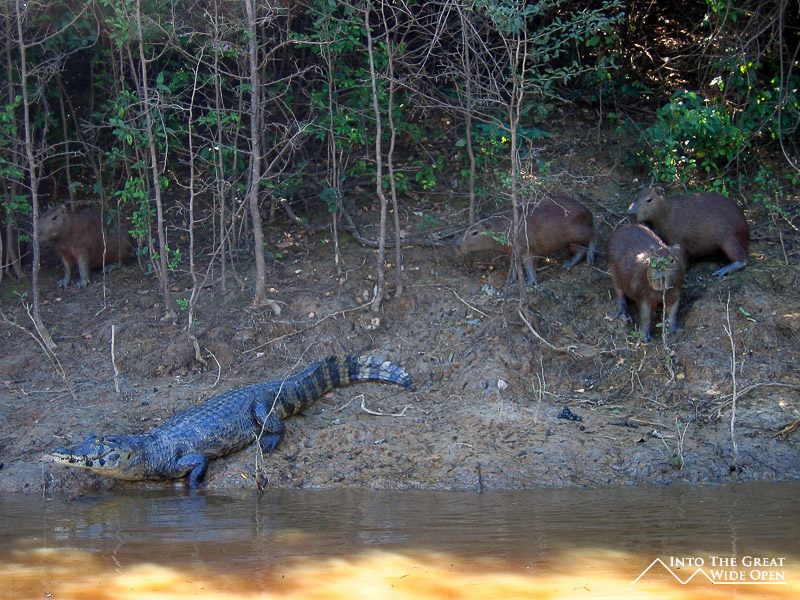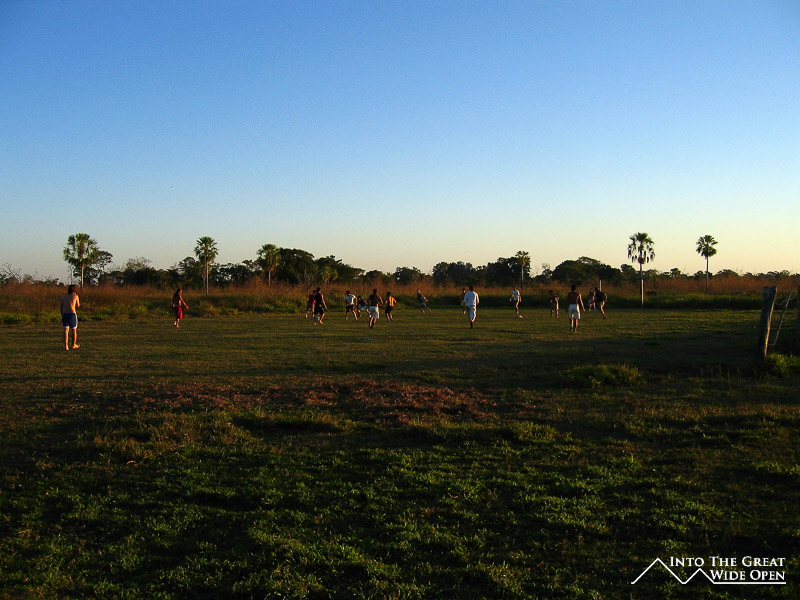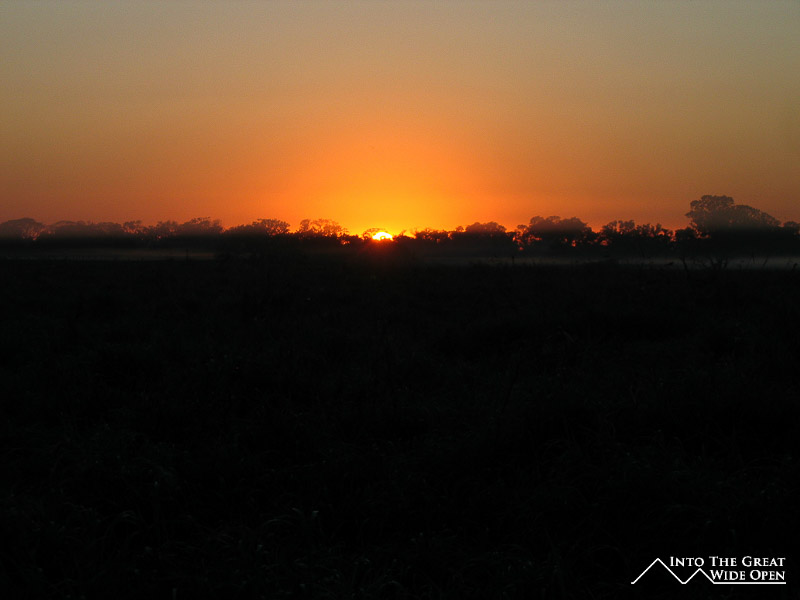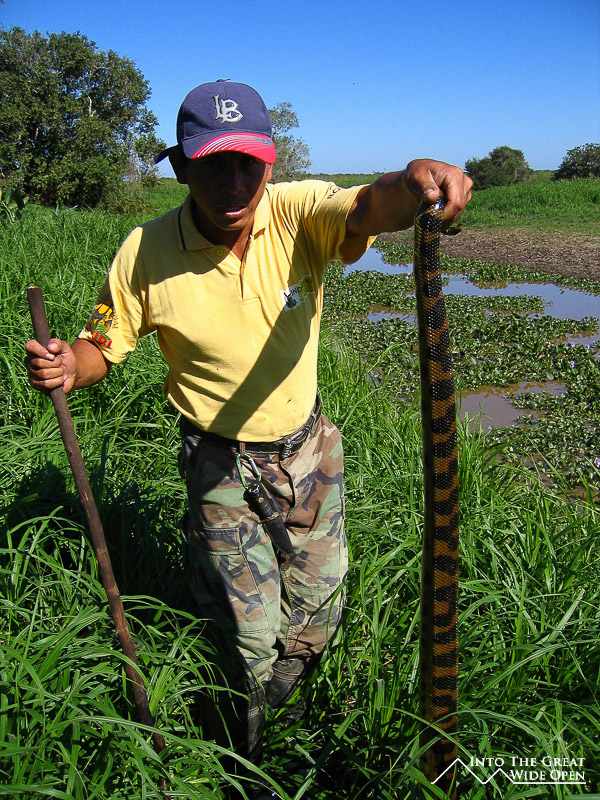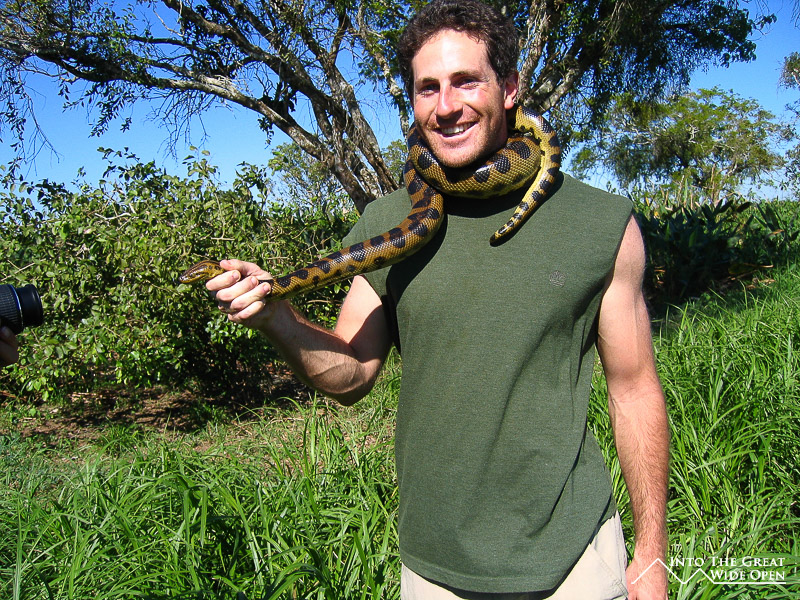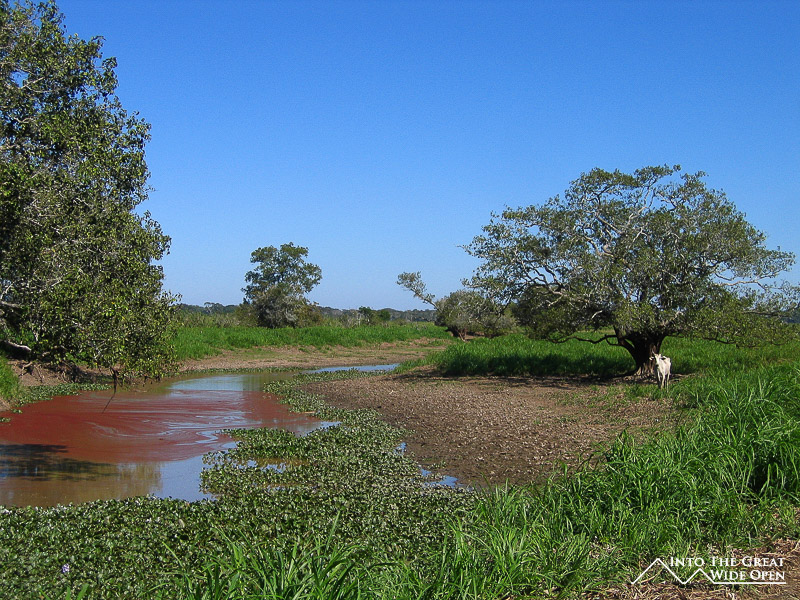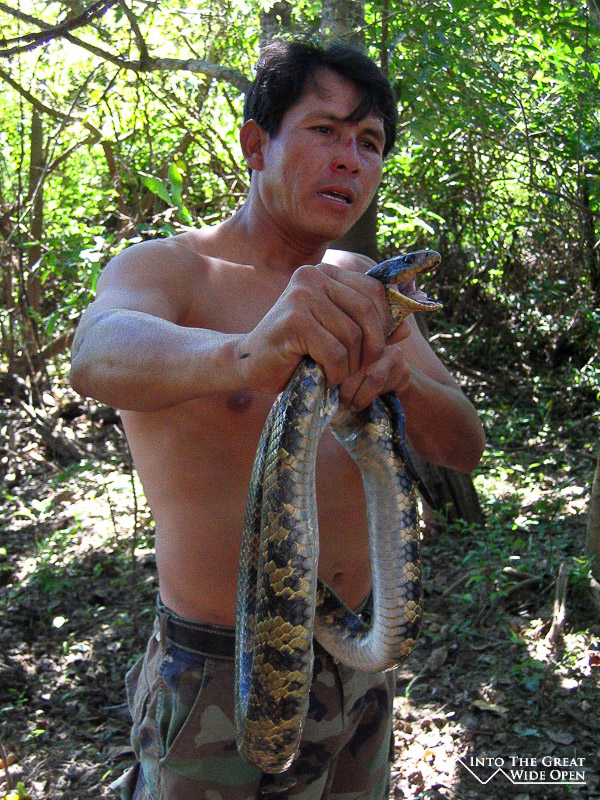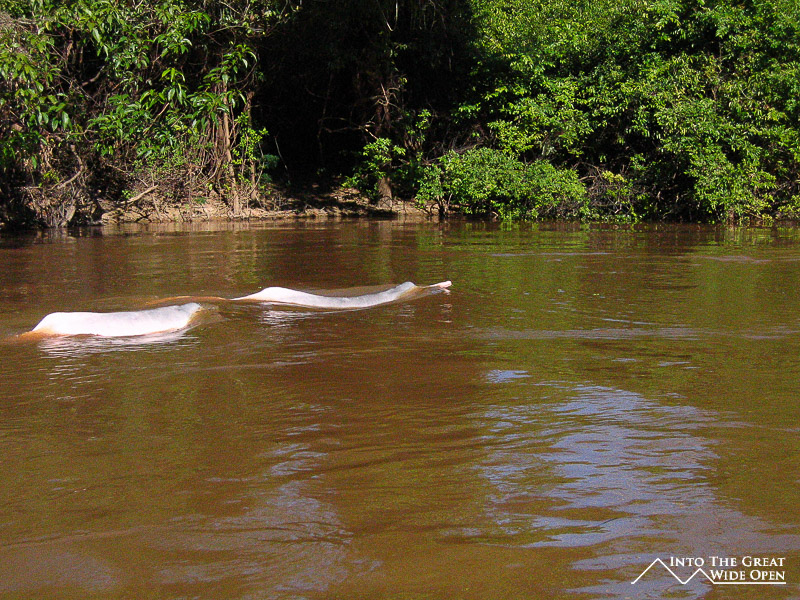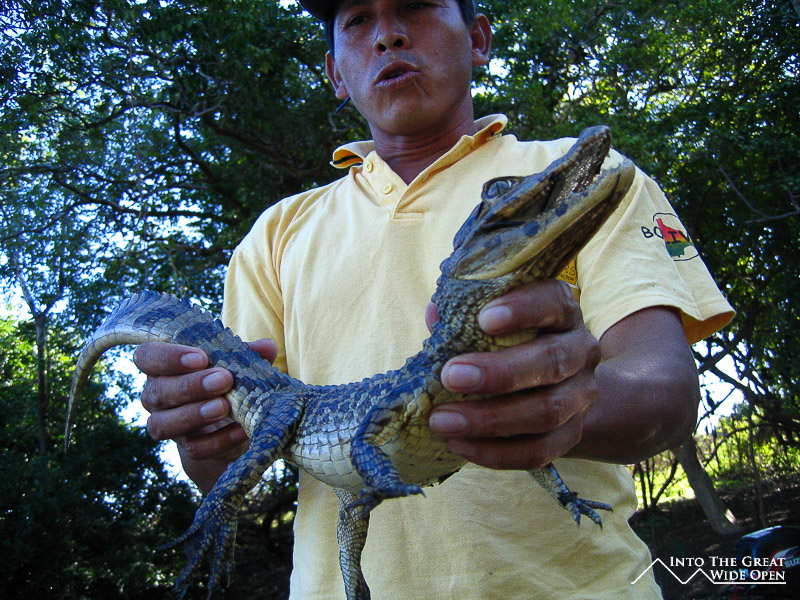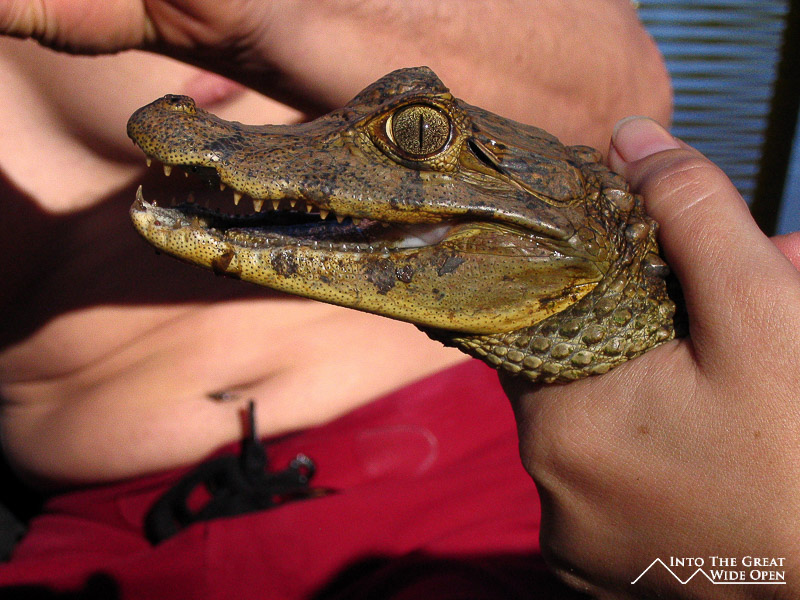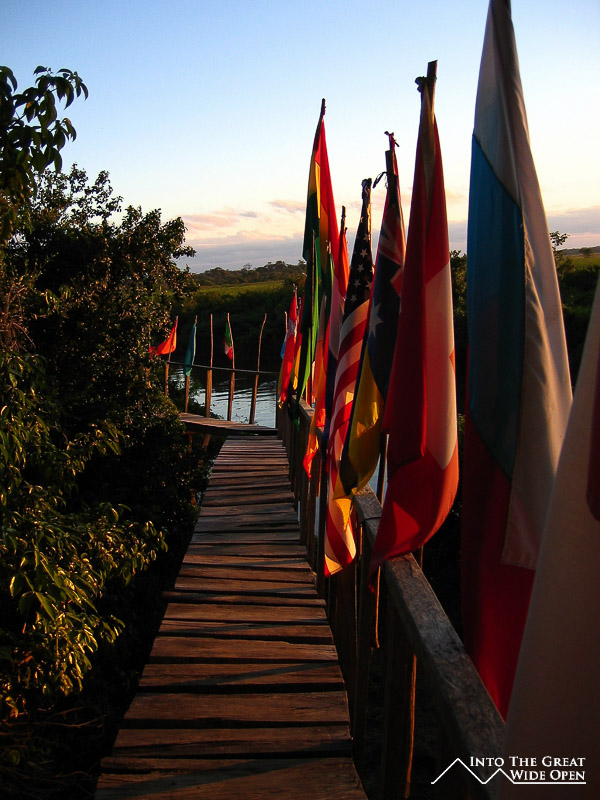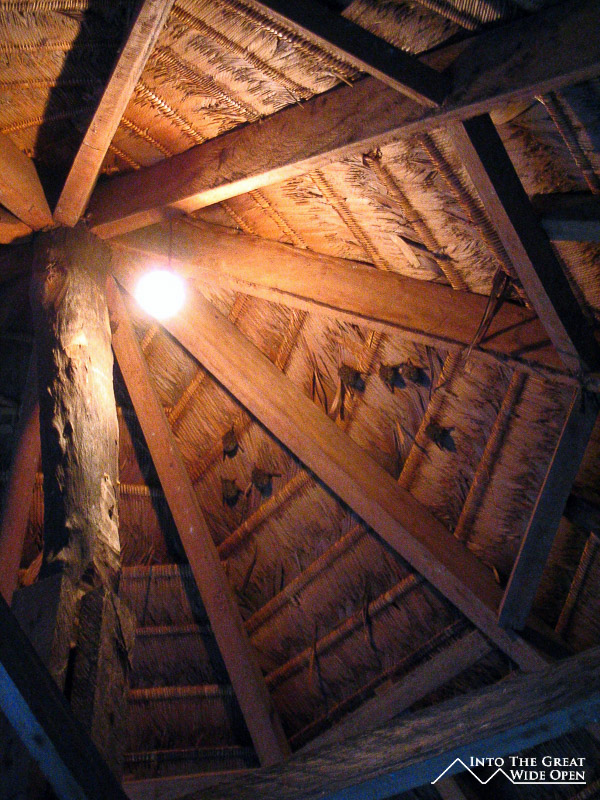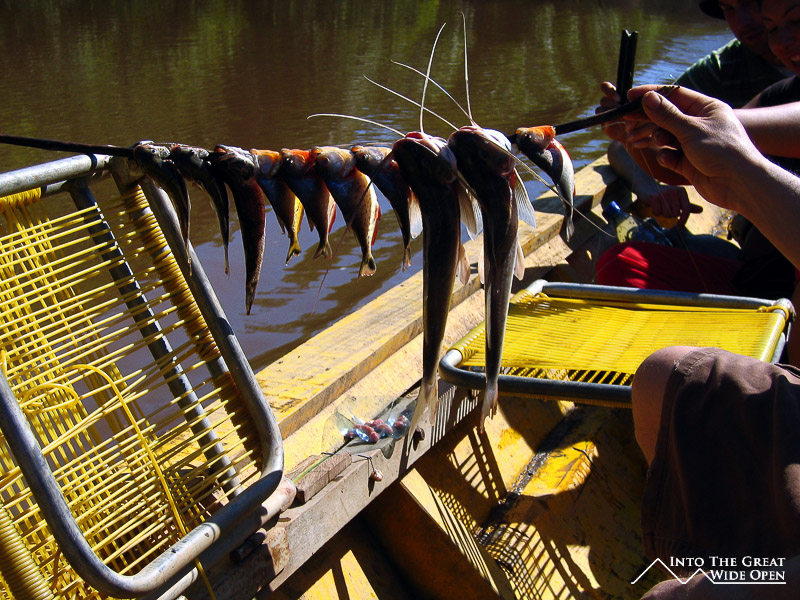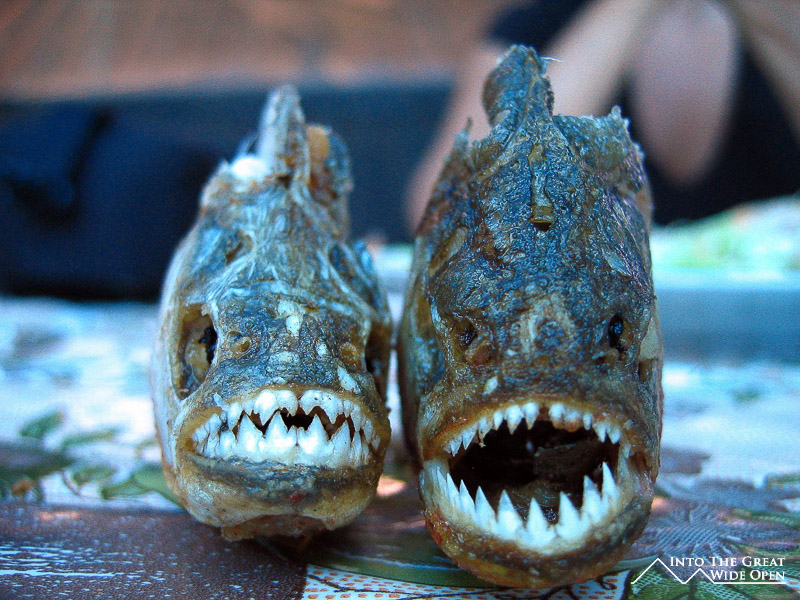Rurrenabaque, Bolivia
The Bolivian Pampas
June 20, 2008
In wildness is the preservation of the world
So seek the wolf in thyself
- Metallica

Rurrenabaque is the gateway town to the Parque Nacional Maldidi, supposedly the most diverse bio-habitat on the planet due to its range of altitudes, climates, and ecosystems. The two most popular excursions are trips to the jungle and the pampas. As my next destination is the Amazon and the rainforest I opted to visit the pampas. The pampas tours involve a three-hour jeep ride up the dusty and rocky dirt road to Santa Rosa from where you take a long narrow motorized river canoe 90 minutes upstream to a region rich in flora and fauna.
The narrow branches of the muddy river are bordered by dense fringes of tall trees and other tropical plants that serve as homes for all sorts of animals. This time of year it is the dry season so the river level is fairly low, but in the wet season much of the region becomes a vast floodplain as the water level rises some 20 feet overflowing the riverbanks. In the midst of the harsh mid-day sun there were alligators and black caimans lying out on the sides of the river. According to our guide the alligators are harmless but the black caimans are very aggressive and you have to watch out for them. There were also turtles stacked onto branches and on top of each other trying to get some sun as well. We spotted several capybaras, a large awkward looking rodent that was probably the shyest of the animals, running away at the noise of our motor and the sight of our boat. The bird life was also abundant with birds of paradise, flamingoes, storks, cormorants, hawks, vultures, and many others that I don´t even know the names for. If you have never seen a stork’s nest, it is quite the sight, usually about 8 feet in diameter and made up of a tangle of large branches, not like the nice neat looking bird nests that you normally see.

As we got further upriver we saw a tree full of gold monkeys. Our guide said that we could give them a banana and the monkeys were all too happy to take it as they swarmed all over each other and were so close to us that one of them defecated on my camera. There were howler monkeys as well, keen on showing off their vocal capacity. After watching the sunset at a rather contrived touristy campsite with a soccer field and volleyball net we went on a night cruise along the river, without the motor to listen to the sounds of the wildlife. All the nocturnal animals were beginning to wake up and the cooler temperatures meant that the animals were moving around more as well. The birdcalls were loud and varied and the sound of the alligators snorting and huffing was really unique.

The next morning we got up early to watch the sunrise on the other side of the river. The views were great as down the river we could see the sun coming up while behind us we could see the full moon shining brightly. After breakfast we put on rubber boots and headed off to march into the marshy wetlands past the riverbanks to look for anacondas and cobras. Lots of walking proved fruitless until we happened upon a smaller anaconda that was only about 5 feet long. Our guide caught it and allowed us to hold it and put it around our necks. It had a good grip on your neck but nothing too tight, and simply tapping the side of the snake would cause it to loosen up and relax. The worst part about holding it was certainly the smell. As part of their defense mechanisms anacondas secrete a fowl smelling liquid that smells so wretched that it almost makes you forget that there is a snake wrapped around your neck. The smell didn´t go away easily either, it took a lot of soap and thorough scrubbing. The anacondas have teeth and do bite if they can, but in the case of this small one they were tiny and our guide had a good grip behind its head to keep it under control.
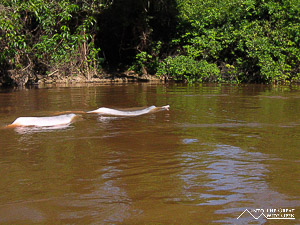
We trekked further into the backcountry of the pampas and at one point we came upon a lone cow with a nice set of horns that was standing near the edge of a field with a river to one side. The bull was eyeing us suspiciously as we approached and didn´t seem to want to move. Suddenly it started to rush towards us and then began to charge at us. Our guide had a stick in his hand and was yelling at it and waving the stick but it was undeterred as it continued towards us. He threw the stick at it and we all scattered toward the edge of the river, not wanting to go in as there could have been anacondas or alligators in there. For a time we were trapped but after its initial charge the bull backed off and we quickly walked away. Our guide thought that it was probably trying to protect a baby that may have been in the fields somewhere, but that either way its behavior was still very strange.

We continued walking to try to find a cobra, not a true black cobra, but another type of cobra that only lives in South America and is just as venomous. Walking ahead of us, our guide approached a small clump of bushes and put up his hand signaling us to stop. He motioned that there was a cobra but from where we were, no one could see anything. He crept slowly into the bushes and then with one quick lunge he nearly disappeared inside the bush and darted back holding the tail of a 10-foot long cobra as we all retreated into a wide semi-circle around him. The snake thrashed around violently trying to bite him but he was too quick for it to get him. His nose was bleeding but he assured us that he had scraped it when he lunged into the bush and that the snake hadn´t bitten him. He continued to wrestle with the snake while taking off his shirt to wipe the dripping blood from his face. Eventually the snake calmed down enough for him to smartly get a hand behind its neck and safely control the venomous creature. He said that we could hold it now that it had calmed down, but after watching it struggle earlier no one wanted any part of it; perhaps it was because if something went wrong and it bit you, you could die. Before he let the snake go he told us not to move and then he simply put the snake down on the ground, in the center of us, to our relief the snake quickly slithered away in the opposite direction and disappeared into a tree trunk.
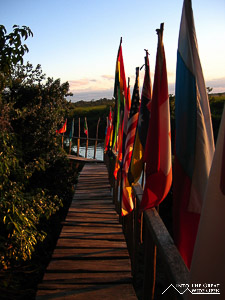
Satisfied that we had seen all that we came to see we headed back to camp for lunch. In the afternoon we went swimming with the pink river dolphins which were all too happy to swim around us as we tried, mostly in vain, to get good photos of them coming up out of the water. After swimming with the dolphins our guide went looking for a baby alligator to catch. He saw one on a riverbank and slowly positioned the boat by the shore. He took a stick and put some leaves on the end to use to distract the little guy. By waving the branch in front of the alligator he was able to sneak in behind and catch it. He brought it back to the boat to show us and we each got to hold the little alligator for a photo opportunity. He said that even at that young age their bite is still very strong, but its skin was soft and smooth with beautiful shades of green and white.
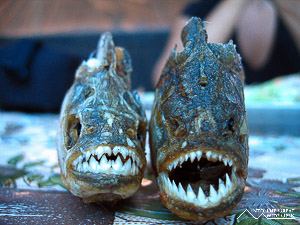
That night we watched the sunset from a nice little bar with a two story deck on the riverfront with great views of the sun setting over the fields of the pampas. On the morning of our last day we went piranha fishing in the same river where we had gone swimming with the dolphins the day before. I think all of us caught at least one fish, with a few piranhas, some sardines, and some black salmon. Our guide of course was really skilled and managed to catch two 6-inch catfish as well as several other fish. Our catch went to augment our last lunch before we headed back downriver in the boat and then to Rurrenabaque in the jeep. Overall the tour was excellent, but so much of it really depends on the quality of the guide, as another group that went with the same company had a poor guide and didn´t have nearly as good of an experience; sometimes luck works in your favor.
From Rurrenbaque I will again be leaving the tourist crowds behind as I head north while everyone else seems to be returning to La Paz to continue to other destinations. On the road north, the bus from Rurrenabaque goes to Guayamarin on the border with Brazil and is supposed to take 18 hours, however if there is rain it could be double that. It is looking clear today so I have my fingers crossed for tomorrow and an uneventful bus ride.
